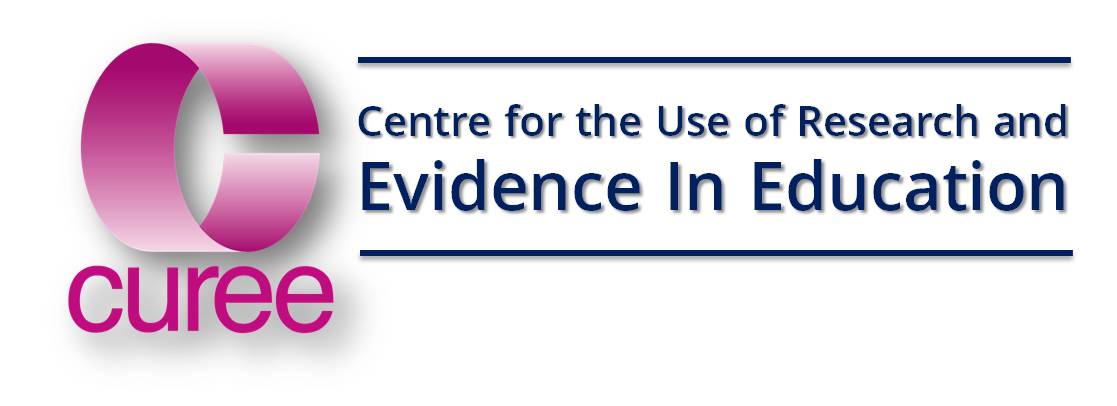Response to Intervention
Sponsored by the National College for Teaching and Leadership as part of Closing the Gap: Test and Learn and supported by CfBT Education Trust.
CUREE are delighted to be a part of the Closing the Gap: Test and Learn project with the Response to Intervention (RtI) intervention, and we are really looking forward to working with the allocated schools. We will be running two full days of training and one half day of training- details of dates and venues are below.
Brief summary of the intervention
RtI uses pupil assessment data to select research-based teaching strategies. Interventions are provided in three tiers of increasing intensity matched to pupil needs. Teachers use monitoring data, as well as evidence of impact of the particular intervention on pupil progress, to determine the level of intensity (the tier) that each pupil is offered. A review of effective approaches to help pupils catch up in literacy highlighted the positive impact of RtI
[1]
.
This RTI literacy intervention is aimed at:
- Year 5 pupils at risk of not achieving level 4 by the end of Year 6; and
- Year 7 pupils whose literacy is not yet strong enough to access for secondary curriculum with confidence.
About the training
The interactive training sessions will provide support with setting up the intervention, and explain the structure and process of RTI. There will be plenty of opportunities to explore the evidence-based tools and resources provided with the intervention. The emphasis will be on building on and strengthening the schools’ current practices and developing capacity to use the RTI approach.
What will happen during the training?
Before session 1- The training includes time to have a ‘dry-run’ with the approach and its tools before using them with the intervention pupils identified by the GL assessment process. We want this practice to be a realistic and valuable experience so we are asking you to come to the first training session with:
a) a printout of the GL assessment report
b) additional/supporting pupil achievement data for 3 ‘practice’ pupils who have literacy needs – BUT who are not FSM and will not be used for the actual intervention
Please contact info@curee.co.uk if you have any problems or questions about the GL assessment report.
During session 1- Teachers will develop their understanding of the core components of the RTI intervention. They will gain an overview of the practical tools and resources to help them with the intervention. You will need to bring a class register with you and the GL assessment report.
Between sessions 1 and 2 teachers will need to gather information about their target pupils’ needs. This will be used in session 2. Guidance on the information to be gathered will be given in session 1.
During session 2- Teachers will gain a detailed understanding of the intervention and the associated tools and resources. They will explore tools in detail in light of their target pupils’ needs and co-construct action plans for next steps.
Between sessions 2 and 3 teachers will start implementing the intervention. They will record their pupils’ progress using the project tools. Completed tools should be brought to session 3.
During session 3- Teachers will reflect on their target pupils’ progress and use this to refine their plans for delivery.
Who should attend the training?
A Pupil Identification Tool has been provided to help your school identify a specific class to participate in the trial (or, in secondary schools, a pair of classes). The RTI trial teachers will teach literacy to the target pupils in one class in primary and two classes in secondary, and will need to attend training sessions 1 and 2. The training is designed for qualified teachers rather than teaching assistants. A member of the school leadership team also needs to attend the training as they will act as a RTI champion and support the RTI teacher(s) in implementing the intervention. We would highly recommend that this is someone who has a literacy leadership role. We advise that primary schools should send one champion and one Year 5 teacher and secondary schools should send one champion and two Year 7 teachers. An additional training place for an extra Year 5 teacher is available for primary schools, but only the teacher participating in the trial and the leadership team colleague are required to attend. The booking form enables you to reserve this extra primary place if you wish.
As the intervention involves whole class, small group and one-to one /paired work with the pupils it is vital that the teachers attending the training regularly teach literacy to the target pupils in Year 5 or Year 7.
RTI champions and teachers must attend both session 1 and 2. Only one member of staff (either the RTI teacher or champion) is required to attend session 3. The booking form enables you to reserve an extra place if you wish.
[1]
EEF (2012) Improving literacy in the transition: What do we need to know about what works? July 2012. London: Education Endowment Foundation [EEF] [Online]. Available at: http://educationendowmentfoundation.org.uk/uploads/pdf/Transition_Catch_Up_Literature_Review.pdf (Accessed: 15 February 2013).
